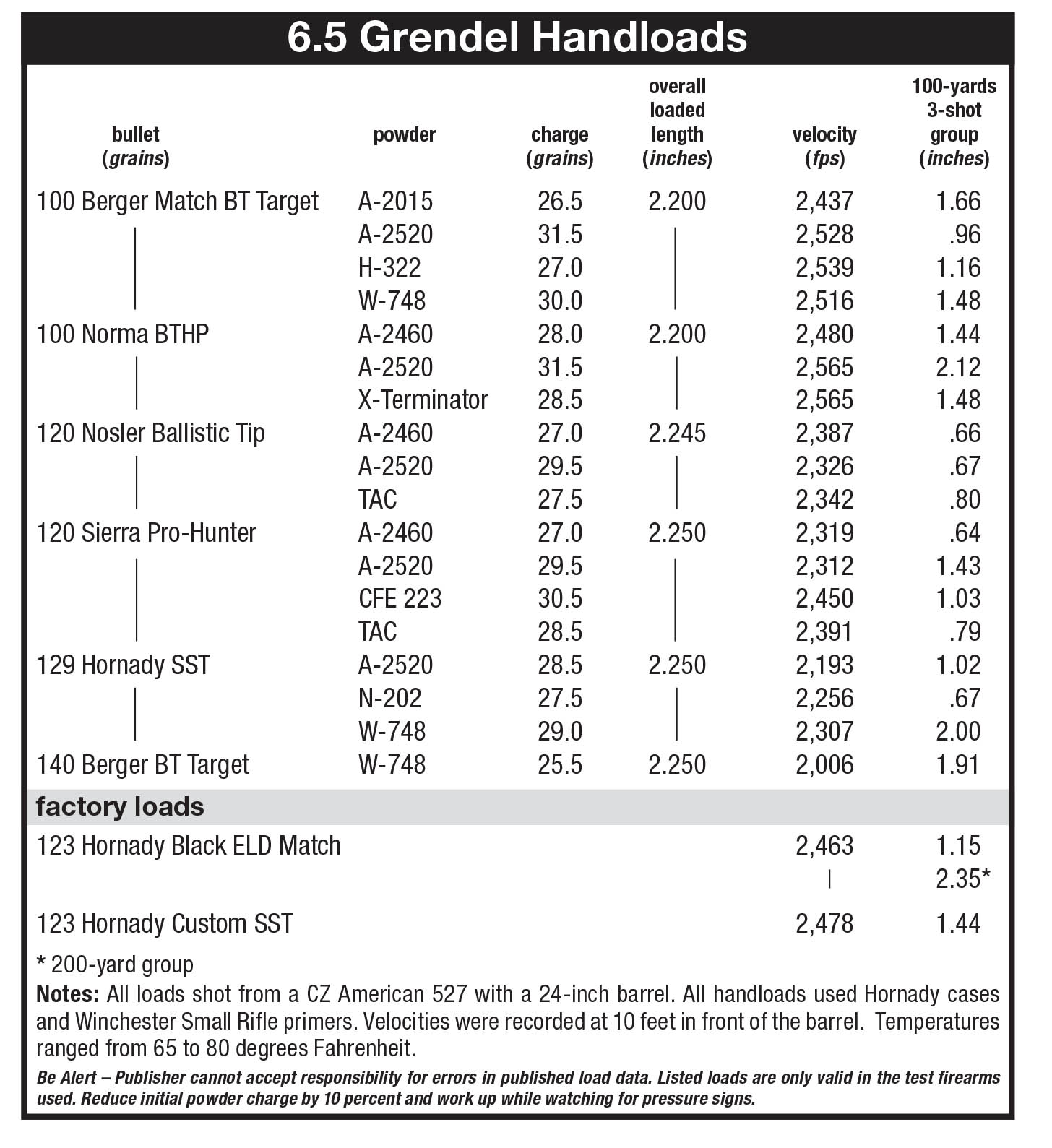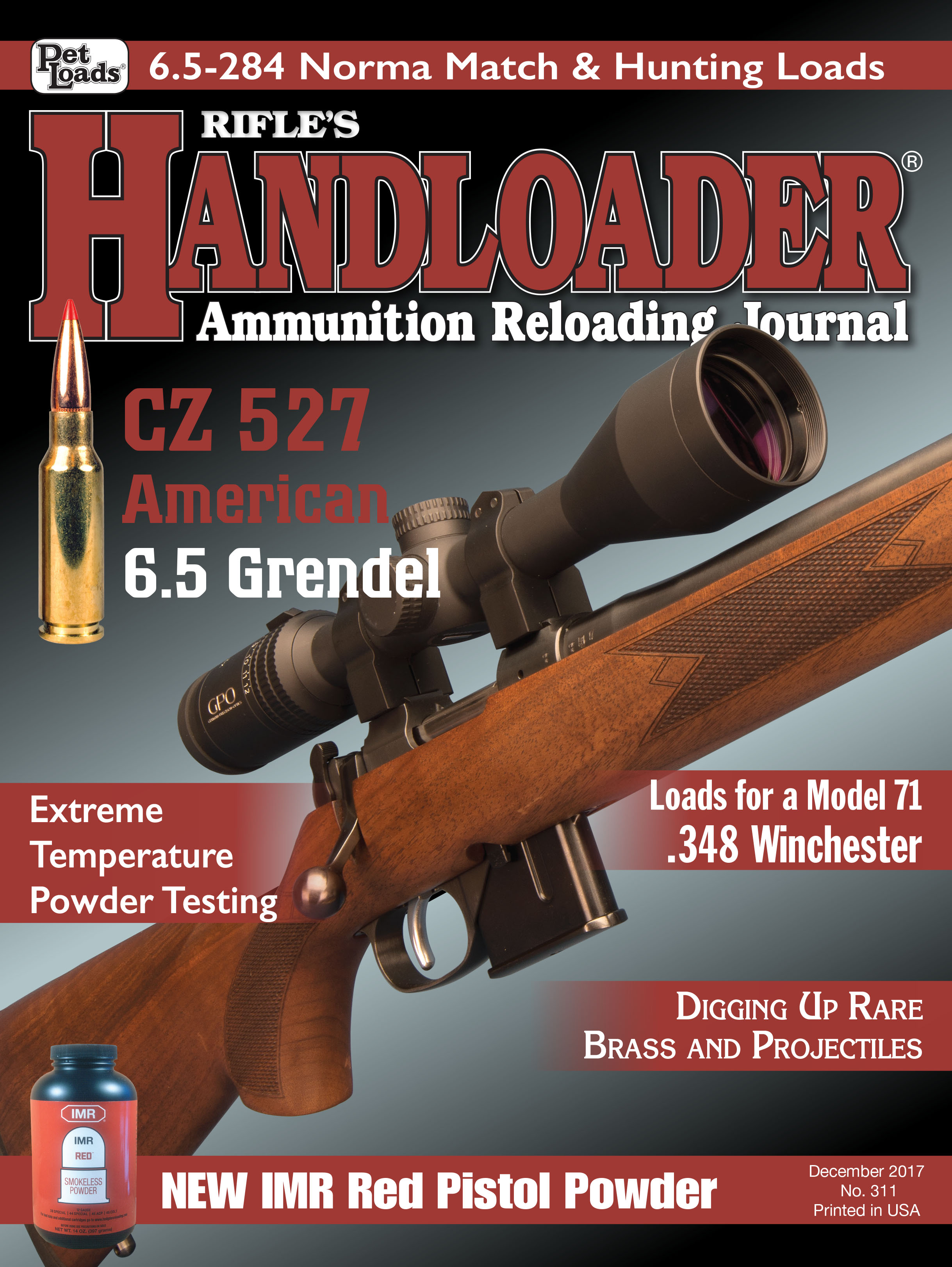6.5 Grendel Handloads
Testing CZ's 527 American Bolt Rifle
feature By: John Haviland | December, 17

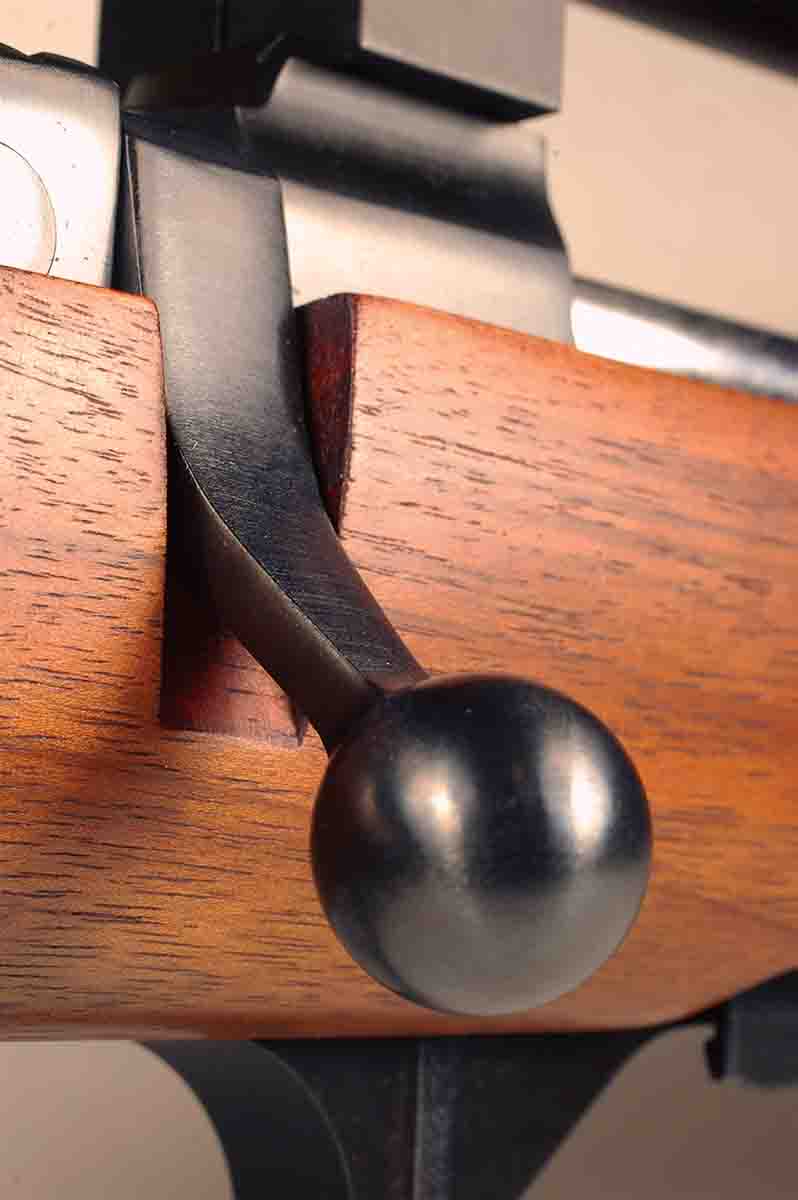
The American rifle has a full-size stock sculpted of Turkish walnut. CZ describes it as a “classic American pattern” with a straight and fairly high comb that drops only .75 inch below the centerline of the bore. Length of pull is 13.5 inches with a half-inch-thick, solid rubber buttpad. The rounded forearm is 10 inches long and the grip is a fairly slender 5 inches in circumference. There is no skimping on checkering, with large, point pattern panels on both sides of the forearm and grip. Some amount of figure runs through the butt of the stock on the test rifle, and its oil finish is dull.
CZ refers to the 527 as a “micro length Mauser style action.” The receiver measures only 6.75 inches from the front to the rear of the tang, and its bolt sleeve is slim. The receiver ring is 1.2 inches in diameter. In contrast, the receiver of a short-action Remington Model 700 is 8.04 inches long, and its receiver ring diameter is 1.355 inches. Even the CZ bolt handle is scaled down. An integral recoil lug is .75 inch wide on the bottom of the receiver ring, and it fits into a mortise in the stock with .70 inch clearance from the magazine opening.
The CZ has a steel, five-round magazine that is locked in place by a spring-pressured tab that protrudes from the right side of
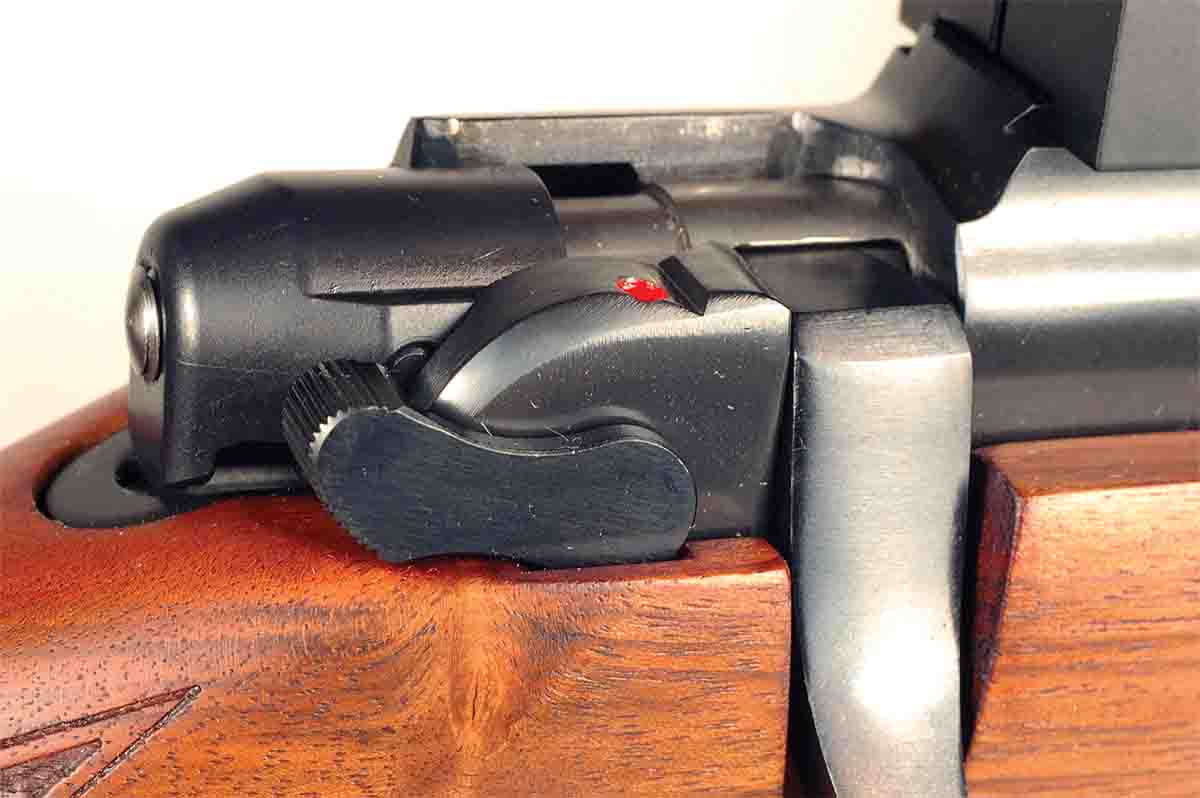
Like the ’98 Mauser, pushing the CZ’s bolt forward strips a cartridge from the magazine. The rim of the cartridge slips under the extractor hook, and the cartridge is held as it is chambered. As a fired case is pulled out of the chamber, it hits a blade at the left rear of the receiver and is ejected. The CZ has a two-position safety on the right rear of the receiver that works backward for American tastes. The lever is moved forward to engage the safety and lock the bolt shut, and rearward to disengage the safety. The top of the CZ’s receiver is cut to accept included CZ one-piece scope bases and rings. However, the test rifle came with Warne rings.
The single-set trigger is the CZ’s most prominent feature. The trigger can be pulled like a conventional trigger, and pull weight was 3 pounds, 4 ounces with some creep. Pushing the trigger forward until a click is heard sets a lighter pull. Pull was 30 ounces with the trigger pushed forward and set. If need be, pull of the regular trigger is adjustable for weight, creep and overtravel by fine-tuning screws on the trigger housing. A screw located forward and above the trigger adjusts the pull weight of the set trigger.
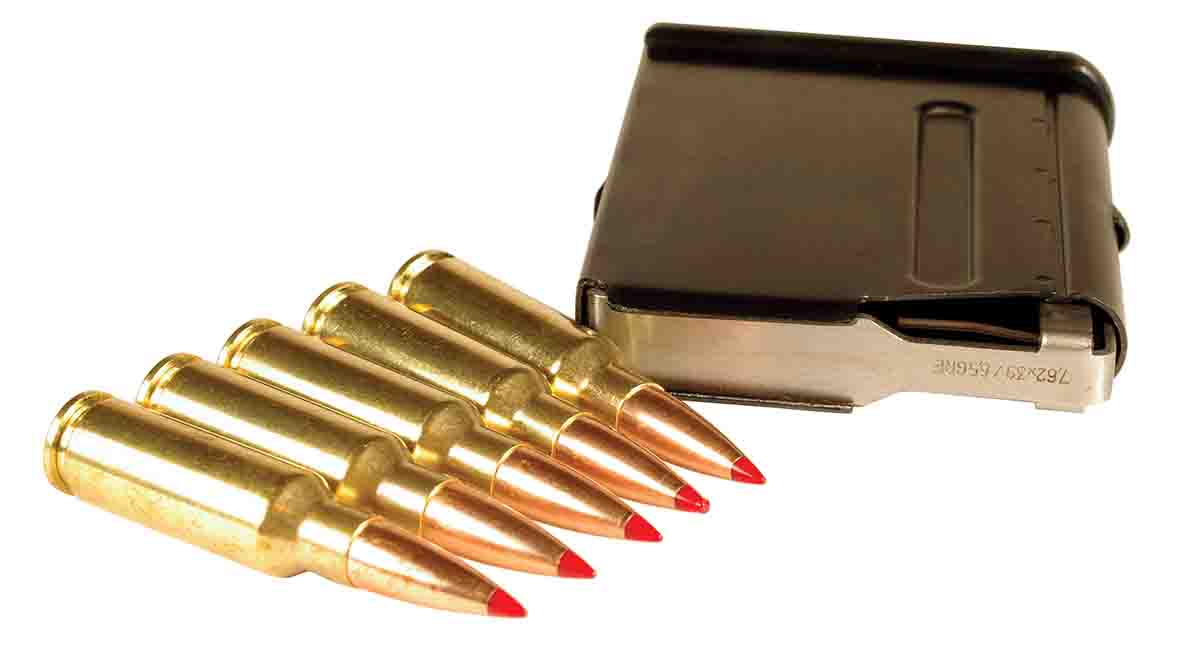
After firing three boxes of 6.5 Grendel rounds through the rifle, a Lyman borescope showed streaks of copper fouling on the rifling lands extending nearly the length of the bore. Soaking the bore for a day with Gunslick Foaming Bore Cleaner removed the fouling. The borescope revealed a very smooth finish on the bore of the hammer-forged barrel.
Alexander Arms invented the 6.5 Grendel in 2002 to mainly fit AR-type rifles. The Grendel case is not much different than the 7.62x39 Soviet case, with a small rifle primer pocket and necked down to hold 6.5mm bullets. In fact, the Alexander Arms website states: “The origin of the 6.5 Grendel may be traced back to the Soviet 7.62x39.”
The 6.5 case is based mostly on the PPC line of cartridges and features a 30-degree shoulder and small rifle primer. The
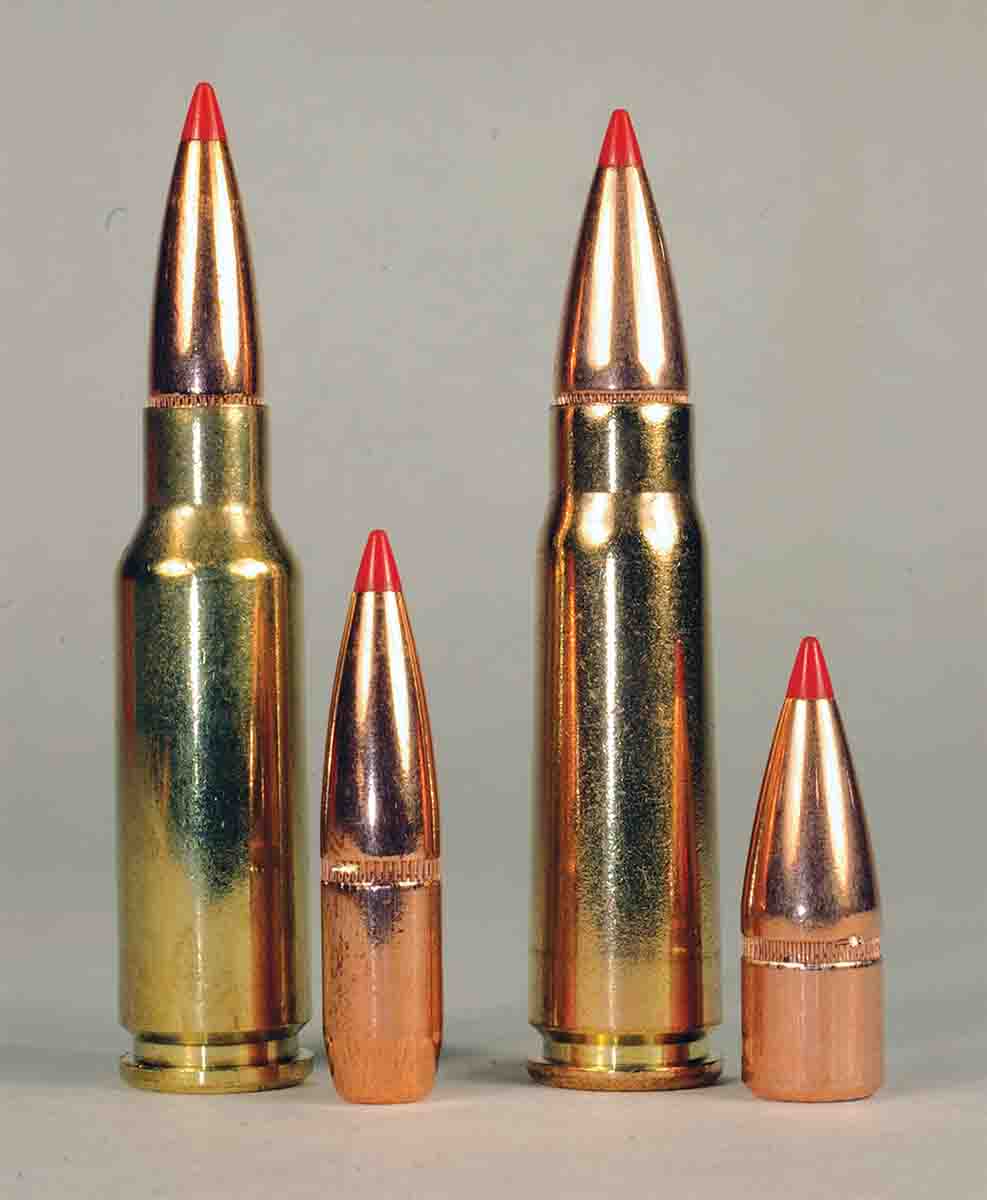
Alexander Arms, Federal, Hornady, Prvi Partizan and Wolfe sell 6.5 Grendel ammunition loaded with 90- to 130-grain bullets. Wolfe even sells steel-case cartridges for about $6 for a box of 20.
The test rifle was shot with Hornady Black ammunition loaded with 123-grain ELD Match bullets, and Hornady Custom cartridges loaded with 123-grain SST bullets. With the rifle supported on a bench, groups at 100 yards ran either side of an inch using the ELD Match loads. SST bullets shot slightly larger groups. The Match bullets shot groups at 200 yards of less than 2 inches to nearly 3 inches. Extreme velocity spreads were 9 fps for the Black loads and 23 fps for the Custom.
Velocities of the two Hornady loads were about 100 fps slower than Hornady lists. Still, ELD Match bullets hitting 2.5 inches above point of aim at 100 yards dropped only 9 inches below point of aim at 300 yards. That bullet drop is only about 4 inches more than a .308 Winchester shooting 150- grain bullets at a muzzle velocity of 2,900 fps.
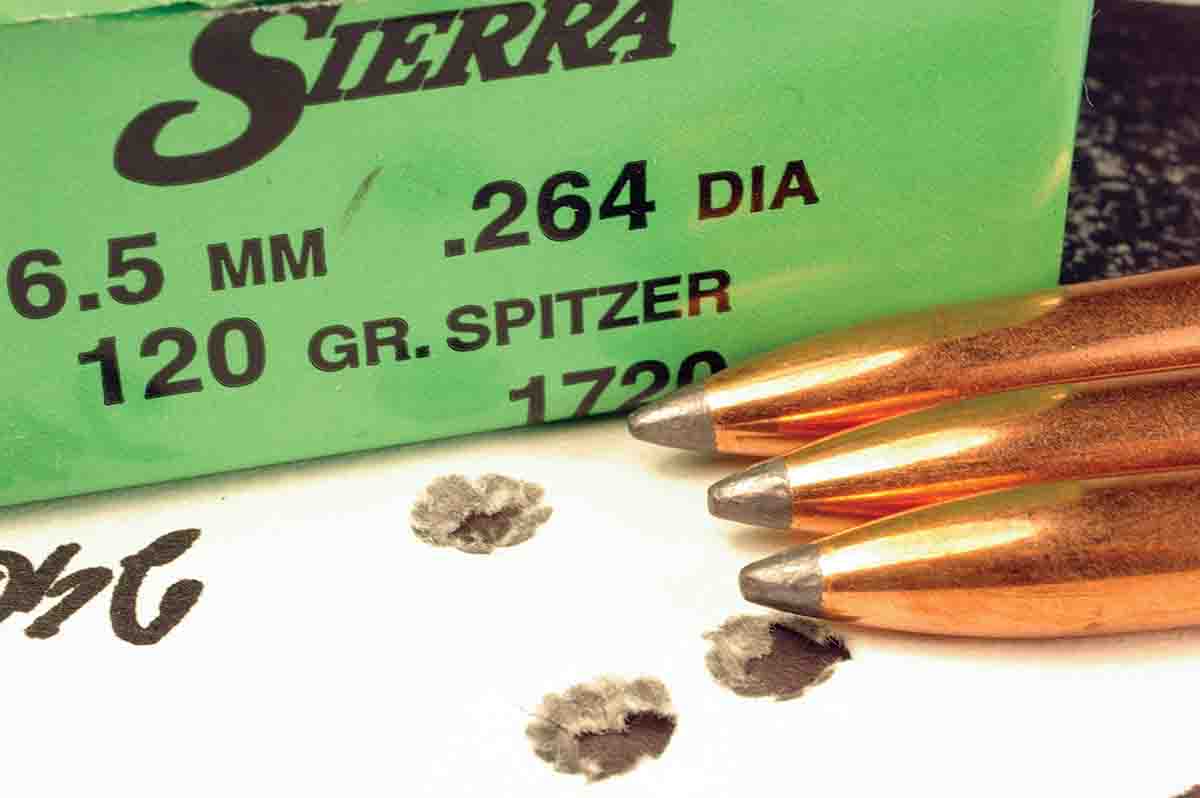
Handload velocities from the CZ came up quite a bit short of those listed in reloading manuals. The velocities stated in the Berger Bullets reloading manual was a good 300 fps faster than what I recorded, despite Berger’s rifle and the CZ both having 24-inch barrels. The CZ produced velocities 50 to 150 fps slower than those listed for the same loads in the Hodgdon, Hornady and Western Powders manuals. For instance, the Hornady manual lists a velocity of 2,350 fps for 129-grain SST bullets fired from an 18-inch barrel, yet the same load reached only 2,193 fps from the test rifle.
The American rifle started to throw bullets 3 inches or so from point of aim once its barrel heated up after firing nine shots. That was most likely caused by the barrel bearing against the stock’s barrel channel. Some effort with sandpaper on the channel where it contacted the barrel should solve that. Once the barrel cooled, the rifle went right back to shooting tight groups.
The Grendel case is a perfect fit of powder and bullet. Most maximum powder charges were slightly compressed. Six powders and six bullets loaded in the Grendel produced velocity spreads mostly between 15 and 30 fps. Velocity spreads ranged from 3 to 12 fps using Accurate 2460 with three different bullets.
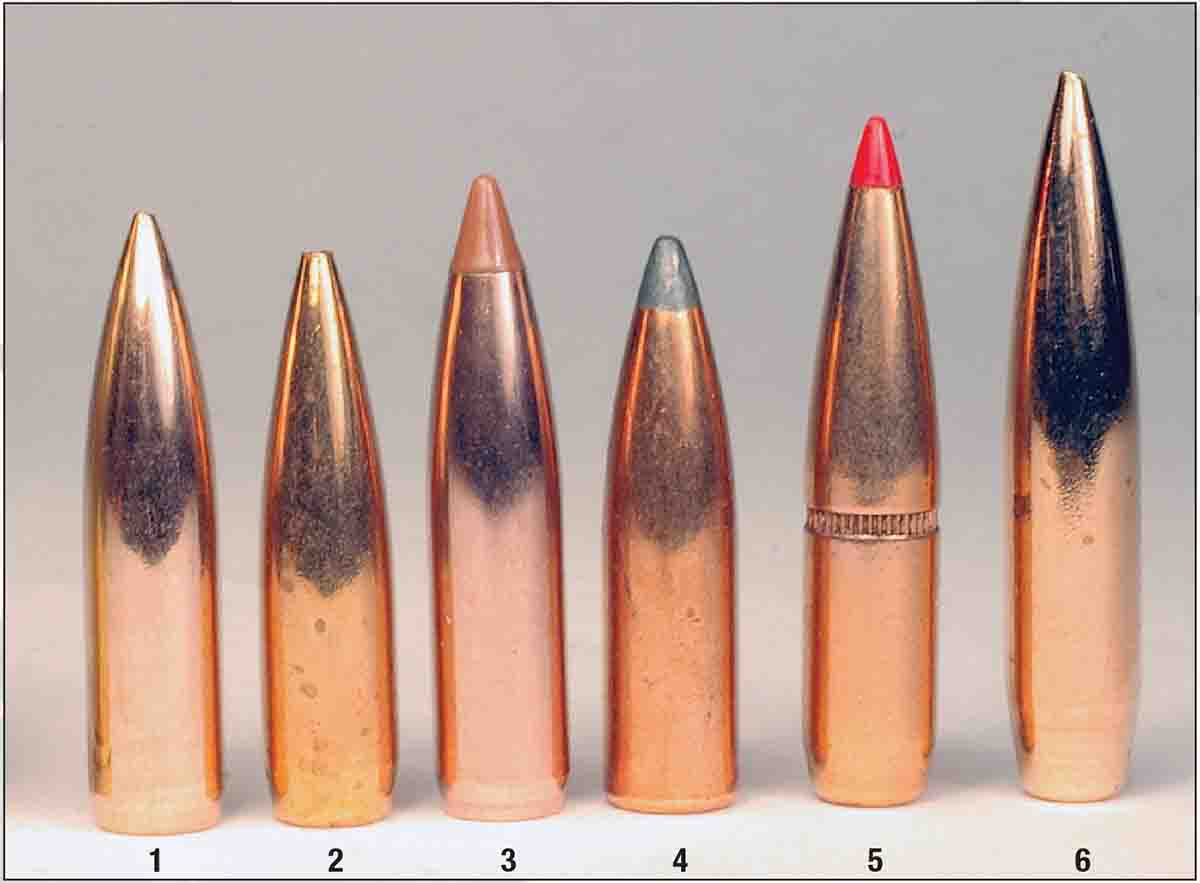
With both bullets at the same 2,478 fps and zeroed at 100 yards, the 6.5 bullet, with a .510 ballistic coefficient (BC), drops about 4.9 inches at 200 yards while the 7.62 bullet, with a BC of .295, drops about an additional inch. At 300 yards, the 6.5 drops 17 inches compared to the 7.62 bullet’s fall of 20.3 inches. At 400 yards, the 6.5 bullet really pulls away with a drop of 38 inches compared to the 47-inch plunge of the 7.62 bullet. The 6.5’s flatter trajectory certainly is a factor when shooting targets.
The 6.5 bullet’s higher BC also retains its energy much better. At 300 yards, the 6.5 123-grain SST bullet carries slightly more foot-pounds (ft-lbs) of energy than the 7.62 123-grain SST carries at 200 yards. The 6.5 SST packs about 1,100 ft-lbs of energy at 300 yards. Somebody long ago said a bullet should carry 1,000 ft-lbs of energy to dependably kill a deer. Adhering to that, the 6.5 Grendel is a 300-yard deer cartridge.
It seems the intent of new cartridges for AR rifles is to improve beyond the ballistics of the 5.56/.223 Remington. The 6.5 Grendel certainly does that, carrying twice the bullet energy at 400 yards as 75-grain bullets fired at 2,700 fps from the .223 Remington. However, at the bullet velocities received from the test rifle, that .223 load shades the Grendel’s trajectory by a few inches out to 400 yards.

GPO 4-12x 42mm Scope
German Precision Optics (GPO) is a newcomer to the optics business, with its binoculars and riflescopes designed and engineered in Germany and manufactured in Japan. GPO sells four models of binoculars from 8x32mm to 12.5x50mm, and four lines of riflescopes from 1-6x 24mm to 5-30x 56mm. I clamped a GPO Passion 3X 4-12x 42mm scope on the CZ 527 American 6.5 Grendel. The scope wasn’t overly large on the CZ, with a weight of 13.8 ounces and a length of 12.2 inches.
Shooting 100 rounds or so through a rifle with a new scope cannot reveal how a scope will stand up to years of bumps and bangs. One assurance is GPO’s lifetime warranty.
Five free ballistic elevation turrets can be ordered for the Passion 3X scope. The turrets mesh with the trajectory of Hornady .223 Remington, 6.5 Creedmoor, .308 Winchester, .30-06 and .300 Winchester Magnum ammunition.
GPO states the high-definition objective glass and GPObright lens coating transmits 90 percent of light entering the scope. I checked the Passion’s resolution in bright midday light at 4x, 8x and 12x on a 1951 USAF resolution test chart. The Passion’s price is $400. While I was at it, I also tested another brand’s 2.5-12.5x 42mm scope that retails for $1,100. The Passion trailed the expensive scope’s resolution by only a couple of bars throughout the power range.
Elevation and windage adjustment dials have 61 inches of adjustment at 100 yards. Each click of the dials moves the reticle .25 inch at that distance. To test the adjustments, I shot the obligatory “box” with the Passion. First, three bullets hit on aim at 100 yards. Three more shots followed each time the adjustment dials were moved 40 clicks (10 inches) left, up, right and down. Each adjustment shifted groups 10 inches, and the final three bullets landed in a 1.06-inch, six-shot group. For more information, visit www.GPO-USA.com.
